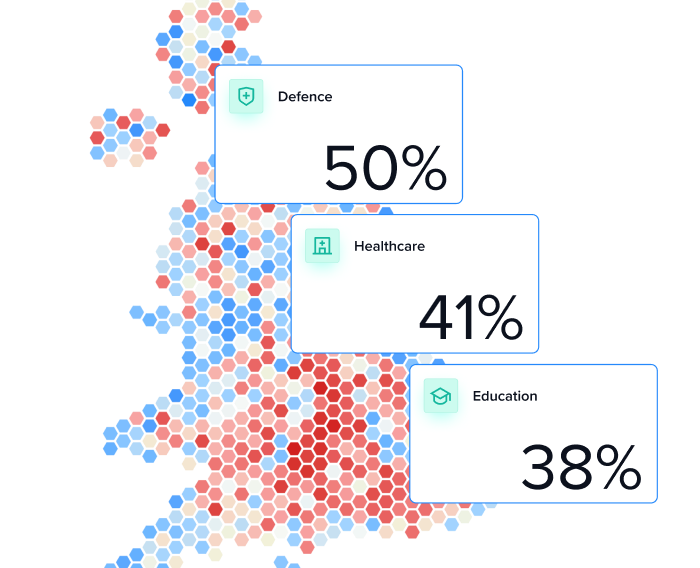Blog/Polling
Poll results: Labour leads by 17 points in new general election poll

We are pleased to announce the launch of a new regular UK general election voting intention tracker from Focaldata. Polls will be released weekly up until polling day, with regular pieces of analysis on social media and the Focaldata blog.
The headlines
- Labour leads the Conservatives by 17 points in our first voting intention poll of the general election campaign.
- Keir Starmer's party currently sits at 43% of the vote, with Rishi Sunak's on 26%.
- Reform UK polled 12%, around the same level as UKIP's 2015 general election result, with the Liberal Democrats on 9% and the Greens on course for a record-high vote share of 6%.
Points of interest
- The fundamentals are in Labour’s favour. Keir Starmer currently leads Rishi Sunak 46–29% on the question of who would make the best prime minister among British adults, and Labour leads 46–32% on the best party to manage the economy.
- Both party leaders are less popular than their party, though Starmer retains a net positive favourability rating of +4, with +15 for the Labour Party. The Conservatives have a net rating of -23, with Prime Minister Sunak at -27.
- New Reform UK leader Nigel Farage remains unpopular with the wider electorate, with a net rating of -16. Among those intending to vote either Conservative or Reform, Sunak and Farage are about equally popular, with the former receiving a net rating of +28 and the latter +29.
Methodological note
Poll was conducted 30–31 May 2024, with a sample size of 2,626 respondents. Responses were weighted by age, gender, region, education and ethnicity. A ‘squeeze’ question was asked to respondents who initially said they did not know who they would vote for. Squeeze respondents who said they would not vote were then removed from the sample, with others allocated to their chosen party.
Turnout was predicted using a turnout model, which uses British Election Study data to estimate a respondent’s likelihood of voting based on their demographics. A manual override was also applied, with those who say they are 0/10 likely to vote automatically assigned a 0% likelihood.
While we finalise research pertaining to false recall of 2019 general election vote, we have chosen not to currently weight by recalled past vote. Given how many voters have switched party since 2019, we expect there to be a higher likelihood of false recall, which could skew our results. Furthermore, given the age divides in each party’s 2019 electorate, there is a significant disparity in expected mortality levels for previous voters of the two major parties. Weighting recalled vote based on the exact vote share of the last general election would not account for this fact. Any future past vote weight for this tracker will attempt to take into account false recall and the number of past voters of each party still in the electorate.
Methodological choices are crucial in determining the size of Labour's lead, with pollsters broadly drawn into two groups — those who remove don't knows, and those who make adjustments for them. Excluding don't knows and would not votes, Labour's lead gradually falls from 24 points in our unweighted survey data, to 17 points after all weights and adjustments have been applied. We believe in transparency at Focaldata, so the steps taken in our methodology, and their effects on voting intention, are shown below.

Data tables
The full datatables are available here.
Source for image of Keir Starmer and Angela Rayner


